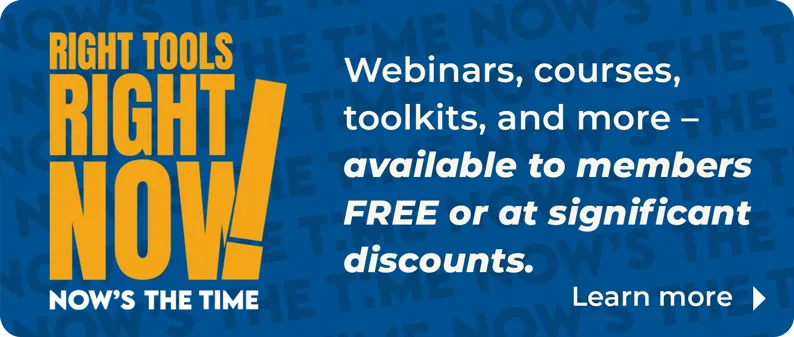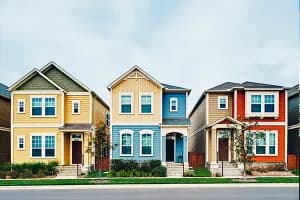
Home prices continue to climb—good news for homeowners but a growing challenge for home buyers. Seventy-seven percent of the nation’s 230 metro markets saw home prices rise in the third quarter, edging up slightly from 75% in the second quarter, the National Association of REALTORS® latest quarterly report showed on Thursday.
Nationally, the median price for a single-family existing home reached $426,800, up 1.7% from a year earlier.
“Prices continue to rise, contributing to record-high housing wealth,” says Lawrence Yun, NAR’s chief economist. In the last five years alone, homeowners have gained an average of $140,900 in wealth, previous NAR research shows. That growing equity is fueling a wave of cash buyers, now at record levels—accounting for 30% of all home sales in September alone, according to NAR.
Yun notes that the highest home price increases in the third quarter tended to be where for-sale inventory is tightest, notably in the supply-constrained Northeast, as well as several markets in the Midwest, where home prices tend to be more affordable.
NAR’s report showed the following metros posted the largest year-over-year median price increases in the third quarter:
- Trenton, N.J.: up 9.9% year-over-year
- Lansing-East Lansing, Mich.: up 9.8%
- Nassau County-Suffolk County, N.Y.: up 9.4%
- New Haven-Milford, Conn.: up 9%
- New York-Jersey City-White Plains, N.Y.-N.J.: up 8.1%
- Manchester-Nashua, N.H.: up 8%
- St. Louis, Mo.-Ill.: up 7.9%
- Bridgeport-Stamford-Norwalk, Conn.: up 7.8%
- Toledo, Ohio: up 7.7%
- Cleveland-Elyria-Ohio: up 7.7%
The Regional Winners—and Where Prices Are Slipping Somewhat
Overall, in the Northeast, single-family home prices jumped 6% in the third quarter compared to a year ago, reaching a median of $540,100. The Midwest followed with a 4.2% annual median home price increase to $331,100.
On the other hand, home price increases were more modest, at 0.5%, in the South, reaching a median of $372,800, while the West saw a slight 0.1% decline, bringing its median price to $633,900.
Overall, 23% of the 230 metro areas analyzed by NAR recorded price drops in the third quarter—slightly fewer than the 24% in the prior quarter.
“Price declines are occurring mainly in southern states, where there has been robust new home construction in recent years,” Yun says. “Given the region’s faster job growth, these price drops should be viewed as temporary and as a second-chance opportunity for those previously priced out of the market.”
Affordability Still a Major Hurdle for Buyers
As home prices climb, buyers are stretching their budgets further to achieve homeownership. Mortgage rates, which started the year around 7%, have eased into the mid-to-low-6% range—offering some relief but not enough to fully offset rising prices.
In the third quarter, the monthly mortgage payment on a typical single-family home (with a 20% down payment) was $2,187—down 2.8% from the second quarter but still 2.2% higher than a year ago, NAR’s data shows.
First-time home buyers, lacking the equity from a previous sale, are being hit the hardest. According to NAR’s newly released 2025 Profile of Home Buyers and Sellers report, their share of the market has fallen to 21%, the lowest level since NAR began tracking in 1981. Prior to 2008, first-time buyers consistently comprised 40% of home sales. But limited inventory and steep affordability hurdles have pushed many to the sidelines.
“The historically low share of first-time buyers underscores the real-world consequences of a housing market starved for affordable inventory,” noted Jessica Lautz, NAR’s deputy chief economist, about the association’s latest findings.
For those first-time buyers who are able to complete a purchase, the financial strain is becoming clear. The typical starter home, which NAR places at $362,800 in its data, now carries a monthly payment of $2,146 (based on a 10% down payment)—up $45 from a year ago. First-time home buyers are devoting 37.4% of their household income toward their monthly mortgage payments—a level most financial analysts consider “cost burdened.”
10 Most Expensive Housing Markets
Coastal areas out West continue to command some of the priciest real estate in the nation. The following metros were the highest-cost housing markets in the third quarter compared to 2024, according to NAR’s latest report:
- San Jose-Sunnyvale-Santa Clara, Calif.: $1.9 million median; up 0.8% year-over-year
- Anaheim-Santa Ana-Irvine, Calif.: $1.4 million; up 0.1%
- San Francisco-Oakland-Hayward, Calif.: $1.3 million; up 0.5%
- Urban Honolulu, Hawaii: $1.1 million; down 0.9%
- Salinas, Calif.: $1 million; up 6.3%
- San Diego-Carlsbad, Calif.: $1 million; 0% change
- Los Angeles-Long Beach-Glendale, Calif.: $954,100; up 0.7%
- Oxnard-Thousand Oaks-Ventura, Calif.: $935,700; down 1.2%
- San Luis Obispo-Paso Robles, Calif.: $931,800, down 1.9%
- Bridgeport-Stamford-Norwalk, Conn.: $844,900, up 7.8%









